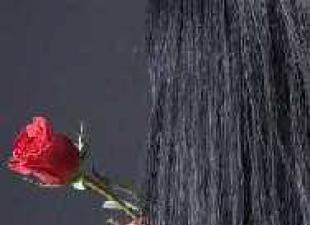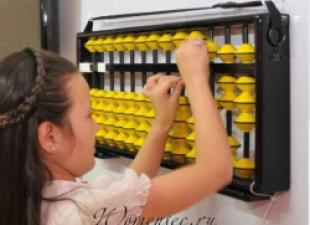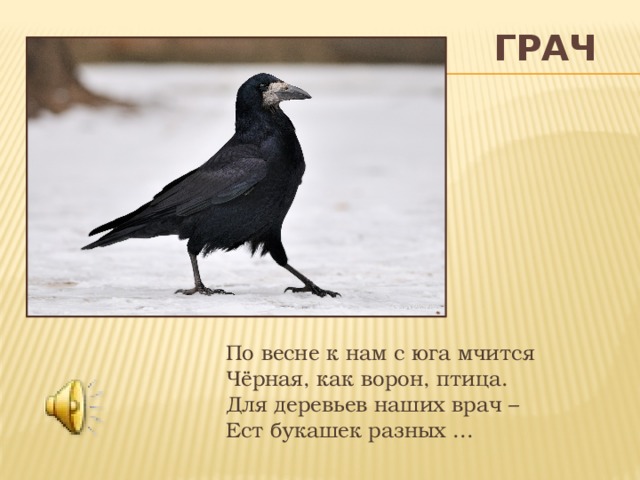
Rook
In the spring a black, raven-like bird rushes to us from the south. For our trees the doctor - Eats bugs of different ...
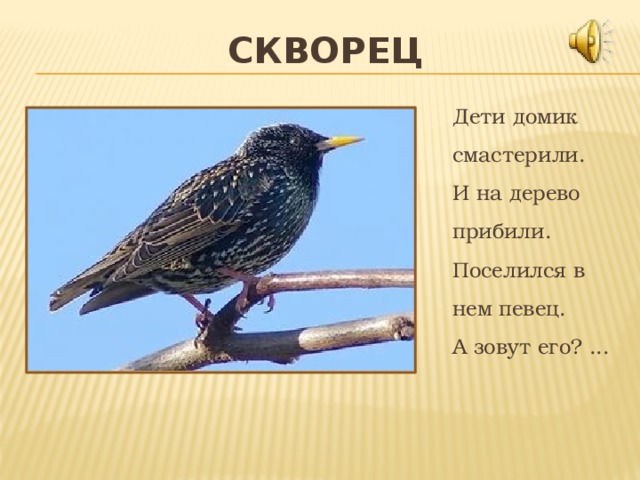
Starling
Children house made. And nailed to a tree. The singer settled in it. And his name is? ...
A large number of bird species is endangered, so any capture of migratory birds should be made taking into account their biological characteristics and conservation status throughout the distribution area. In Romania, 12 species of birds are considered threatened internationally, and the area of protected areas exceeds 17% of the country's territory. In the district of Karash-Severin, 7 special areas of protection from aviofauna were announced, which are aimed at protecting and preserving bird species that are rare or endangered at the European level.
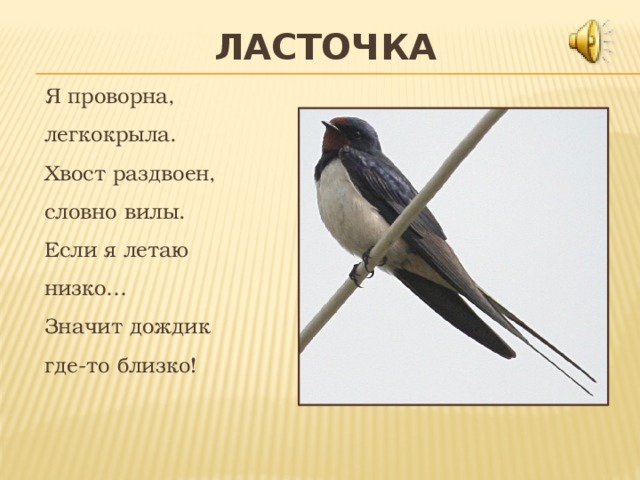
Swallow
I am agile, light wing. The tail is forked, like a pitchfork. If I fly low ... It means rain
somewhere close!

Stork
He lives on the roof of the house
Long-legged, long-nosed,
In the county we can observe many species of migratory birds, among which we mention: white stork, black stork, red duck, crab duck, wild duck, whistling duck, spears, lingvur, eagle, small falcon, pygmy cormorant, miniature eagle, red hawk, gray stork, reed snails, little heron, big heron, blue seagull, hawk hawk, dwarf hawk, dune hawk, hockey-hock. To mark this event, a series of educational events will be organized to raise awareness of the need to protect migratory birds and their habitats.
He is flying
behind the frogs
to the swamp ...
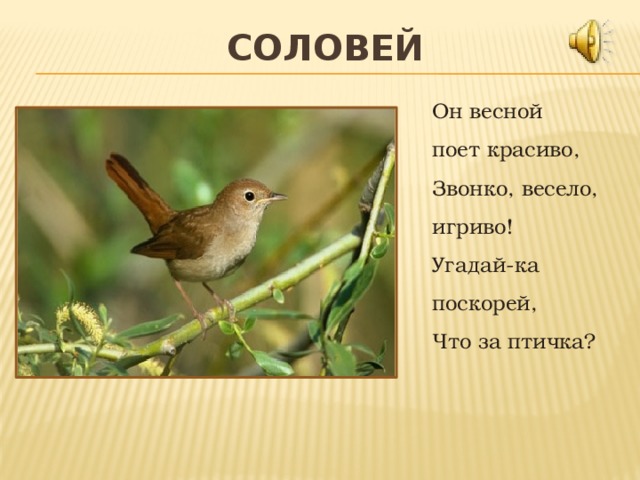
Nightingale
He spring
sings beautifully, sonorous, fun, playful! Guess quickly, what a bird?
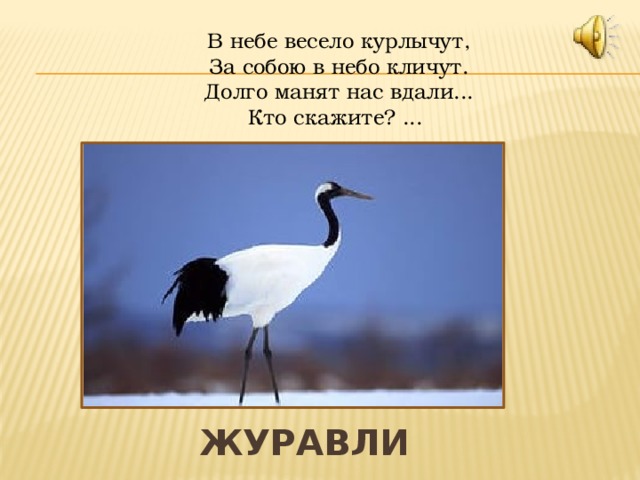
In the sky they smoke cheerfully, They call themselves skyward. For a long time they beckon us away ... Who tell me? ...
Thus, students will have the opportunity to observe various forecasts and presentations regarding migratory birds and the conservation of wild bird species in Karash-Severin District as follows. Every year, millions of birds migrate from their breeding grounds to their wintering areas, looking for the best feeding place for each season of the year. They can be seen traveling across the sky on their long and risky journeys. Migration is one of the most exciting shows that nature has to offer.
Caught Eagles Embraced Eagles also change their preferences, and some no longer migrate to Africa to spend the winter. In the fall, they usually flew to Africa, with the exception of, apparently, the sedentary Balearic population. That was until the 1980s. Since then, the number of eagles on foot in the winter on the Iberian Peninsula has gradually increased.
Cranes
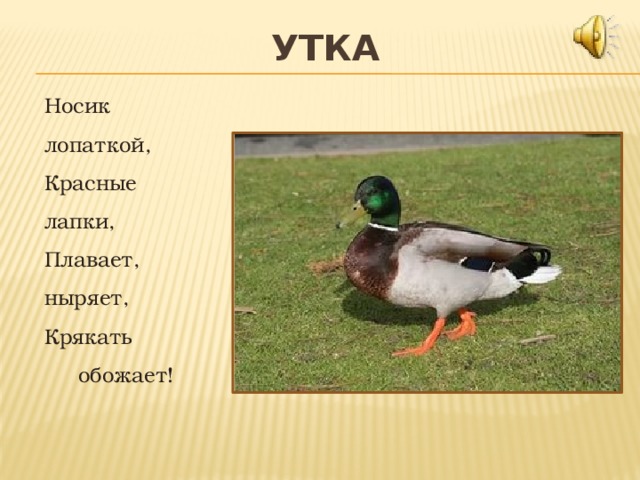
Duck
Spatula Spatula Red
paws, swims, dives, quack
Goose
Over the grass he
walks importantly, out of the water
dry goes, Wears
red shoes, gives
The day to remember Today, May 10, the world celebrates World Migratory Birds Day. This year with the slogan “Your future is our future” reminds us that birds are excellent bioindicators of the health of our planet, and what happens to them will reflect our future and our needs for adaptation.
Such events show the interdependence of people and nature, and especially migrating people and animals, especially birds, because they share the same planet and the same limited resources. Knowing the changes in bird migration strategies, you can warn us and tell us the management priorities and keys for our adaptation in critical areas. In short, changes in the routes and migratory behavior of birds can help us, as a society, anticipate and identify the risks and scenarios of the future we face.
soft perinki.
and pulls the neck, no, probably
birds are bolder. But I am not afraid of him. Who is this? It…
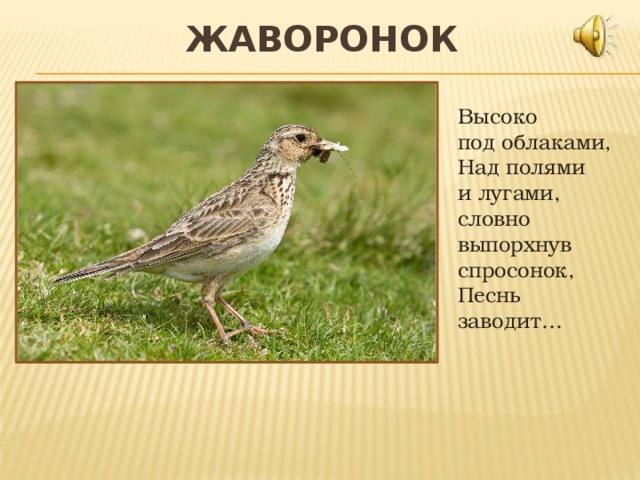
Lark
under the clouds, above the fields
and the meadows, as if fluttering asleep, The song starts ...
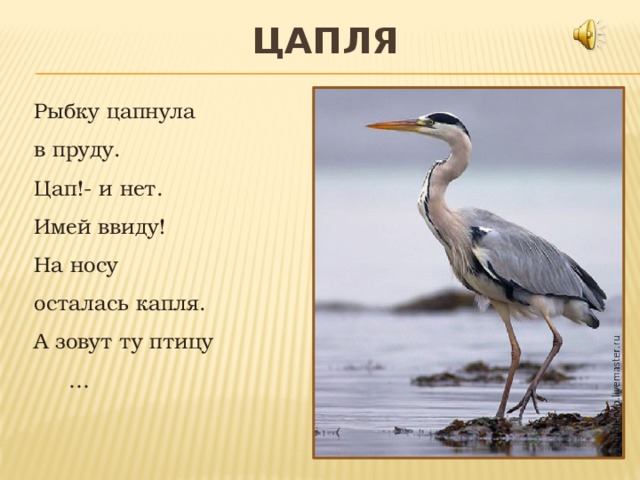
Heron
Fish sniffed
in the pond. Tsap! - and no.
Bear in mind! On the nose
left a drop. And the name of the bird
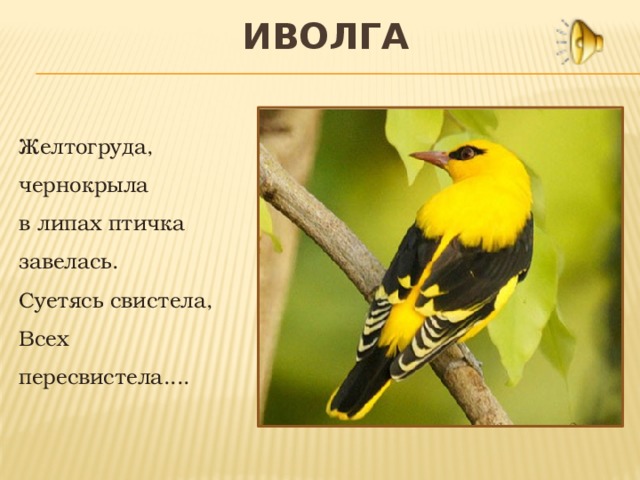
Oriole
Yellowhorn, blackwing
in lindens bird started up.
Hustling whistling
All whistled ....
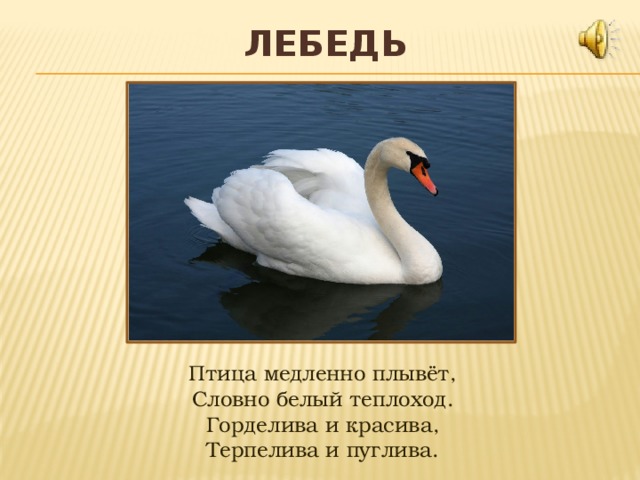
Swan
The bird swims slowly, Like a white ship. Prideful and beautiful, Terfeiva and shy.
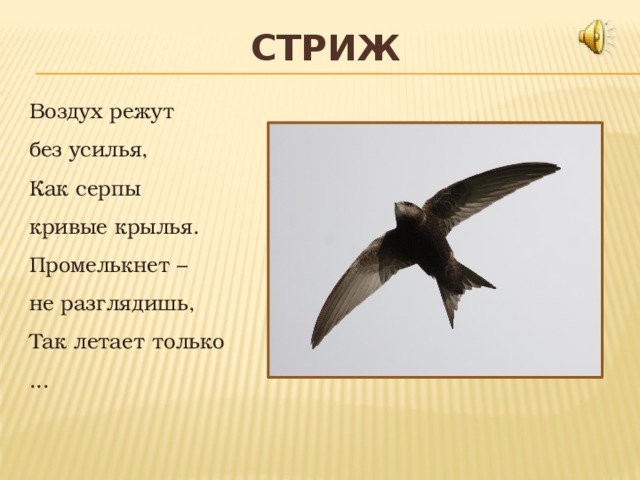
Swift
Air cut
without effort, like sickles
curved wings. Flashes -
do not make out, So only flies
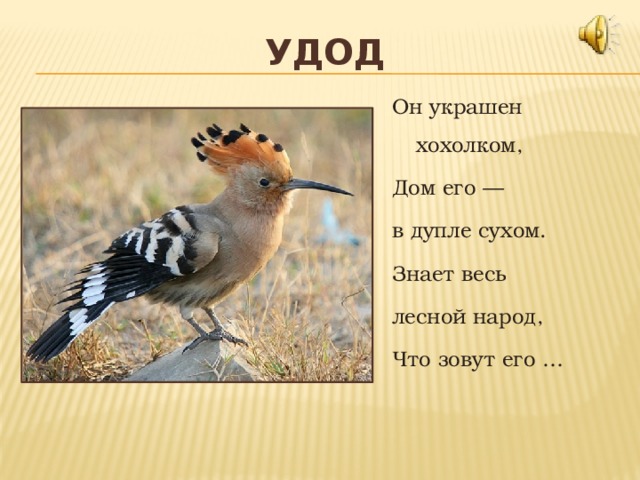
hoopoe
It is decorated with a tuft,
in a hollow dry.
Knows all
forest people
What is his name ...
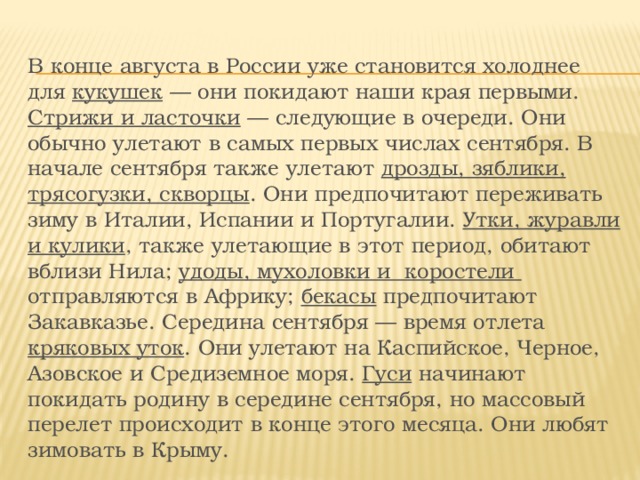
In late August, Russia is already getting colder for cuckoo - they leave our lands first. Swifts and swallows - next in line. They usually fly away in the very first days of September. In early September, also fly away. blackbirds, finches, wagtails, starlings . They prefer to live through the winter in Italy, Spain and Portugal. Ducks, cranes and sandpipers also flying away during this period, live near the Nile; hoopoes, flycatchers and corncrakes go to Africa; snipe prefer Transcaucasia. Mid September - departure time mallard ducks . They fly to the Caspian, Black, Azov and Mediterranean seas. Geese begin to leave their homeland in mid-September, but the mass flight occurs at the end of this month. They love to winter in the Crimea.
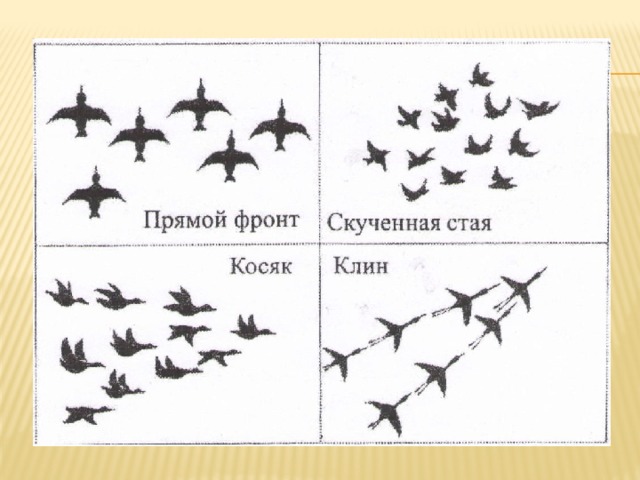
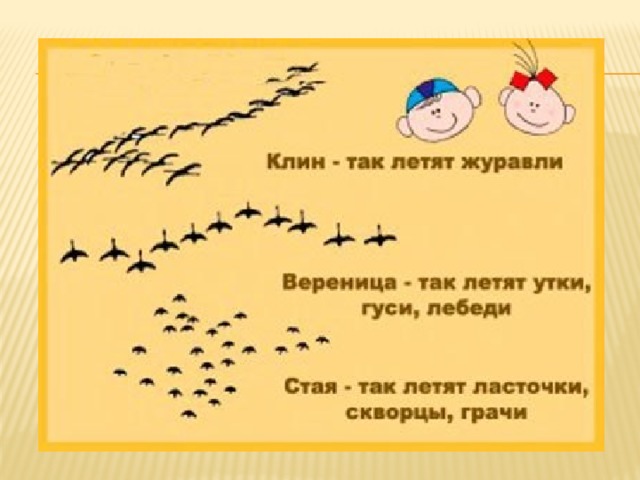
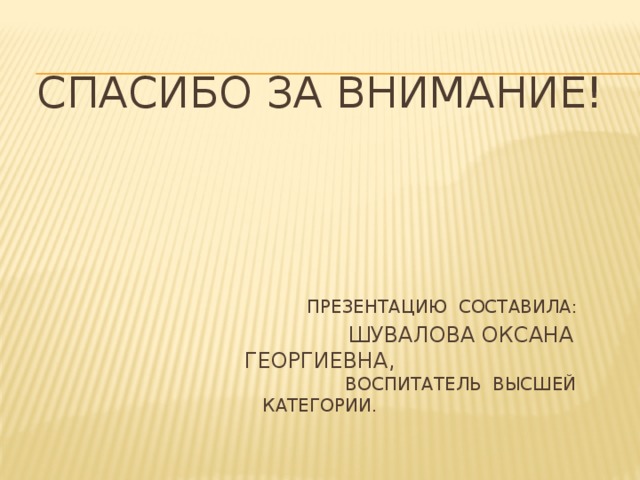
Correctional educational goals: Consolidating ideas about migratory and wintering birds. Refinement, expansion and activation of the dictionary on the theme “Migratory and wintering birds” (crow, magpie, pigeon, sparrow, bullfinch, tit, feeding, feeding, help, stork, swallow, rook, starling, cuckoo, hungry, freeze, feed, scoop Consolidation of ideas about migratory and wintering birds. Refinement, expansion and activation of the dictionary on the topic "Migratory and wintering birds" (crow, magpie, pigeon, sparrow, bullfinch, tit, feeding, feed, help, stork, swallow, rook, starling, cuckoo, hungry, freeze, feed, pour.
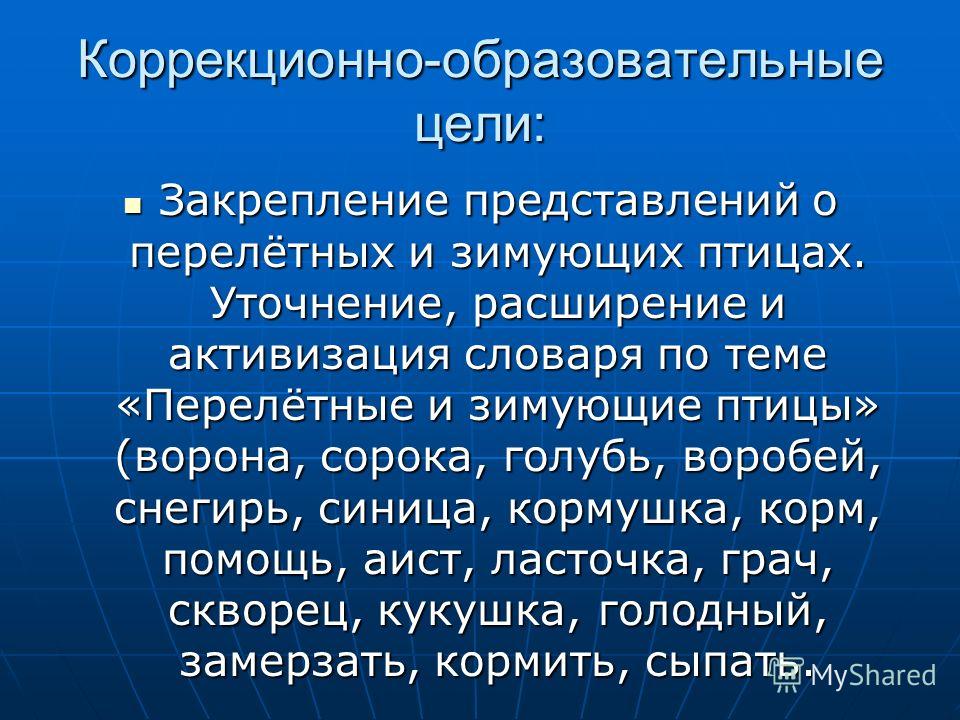

Correction and educational objectives: Formation of skills of cooperation, mutual understanding, goodwill, independence, initiative. Education love and respect for nature. Formation of skills of cooperation, mutual understanding, goodwill, independence, initiative. Education love and respect for nature.
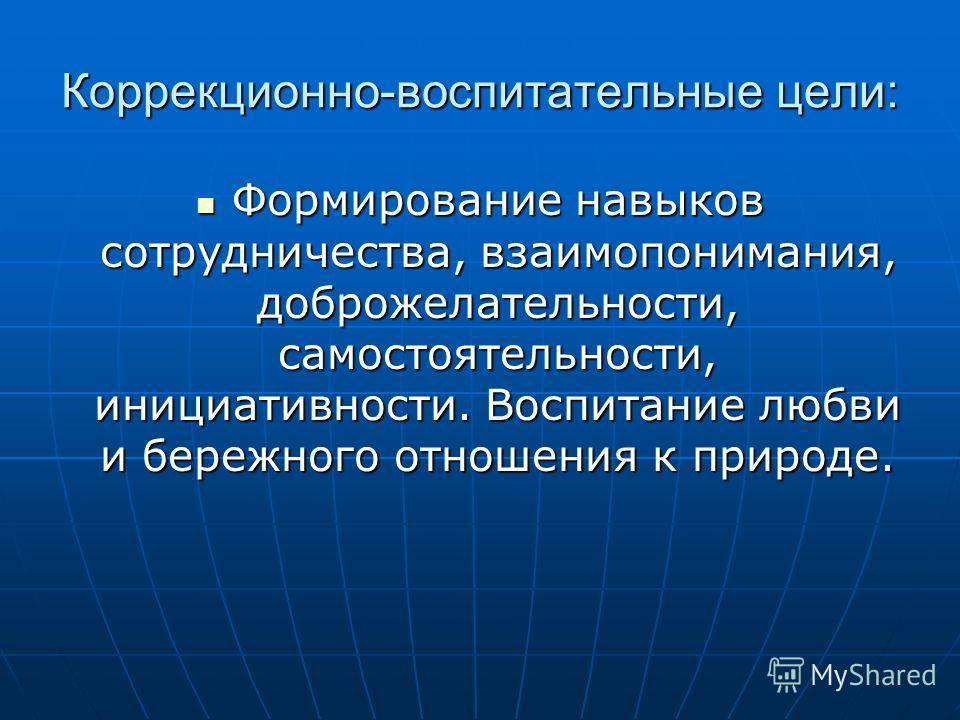
Equipment: Object pictures of migratory and wintering birds. Object pictures of migratory and wintering birds. Presentation. Presentation. PI plays Tchaikovsky from the cycle "Seasons". PI plays Tchaikovsky from the cycle "Seasons".
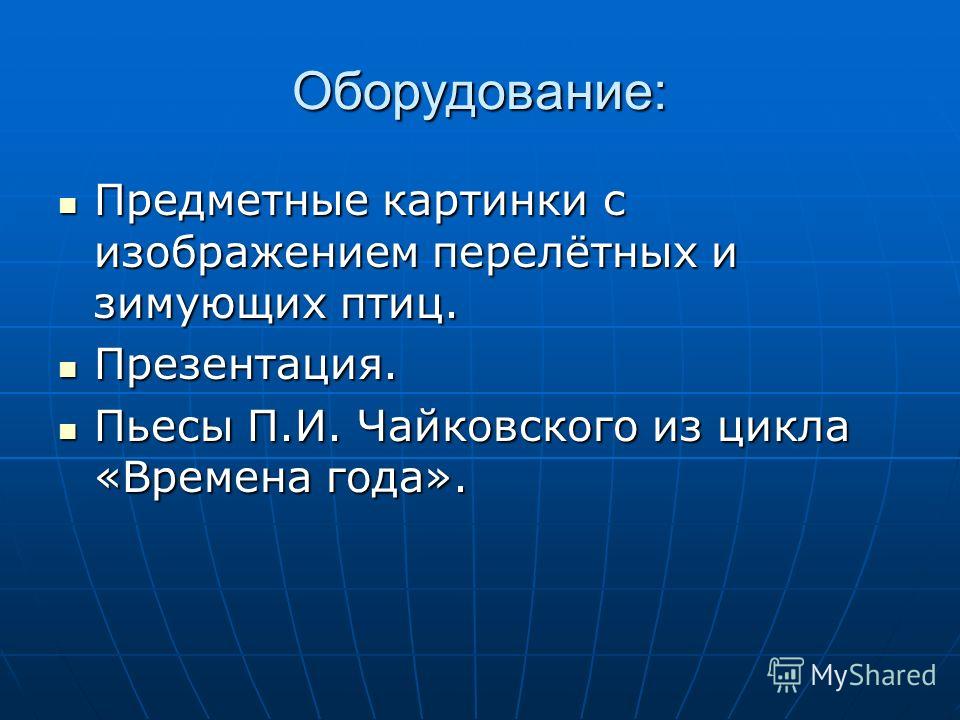
Preliminary work: Walk to the forest. Walk into the forest. Observation of autumnal changes in nature. Observation of autumnal changes in nature. Listening and discussion with the musical director of the plays PI. Tchaikovsky from the cycle "Seasons". Listening and discussion with the musical director of the plays PI. Tchaikovsky from the cycle "Seasons". Reading the stories of V. Zotov "Bullfinch", "Klest-elovik." Reading the stories of V. Zotov "Bullfinch", "Klest-elovik."
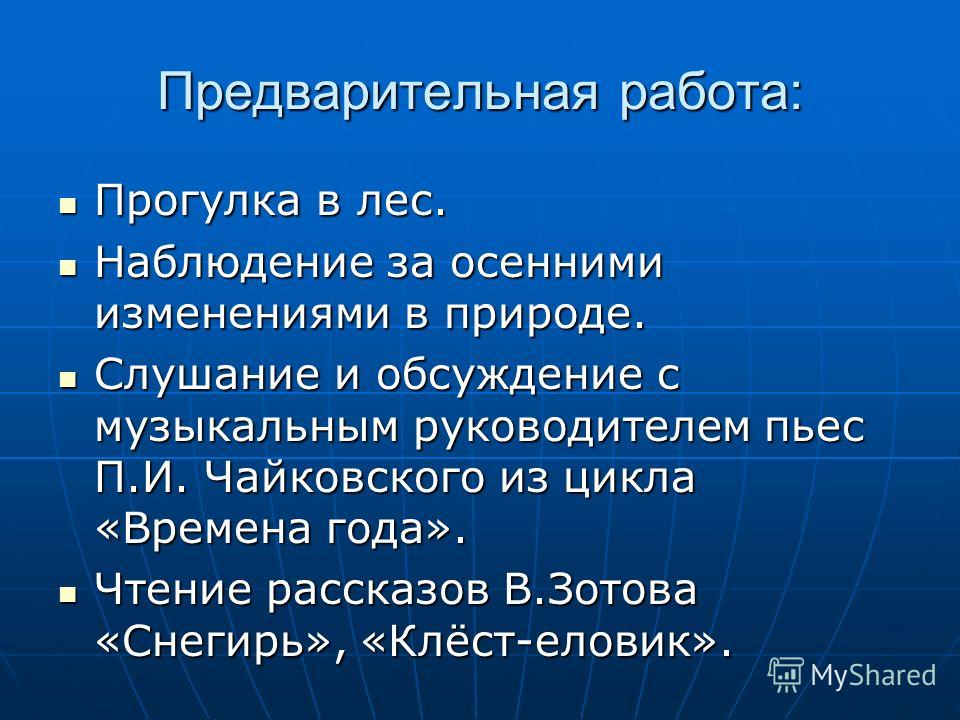
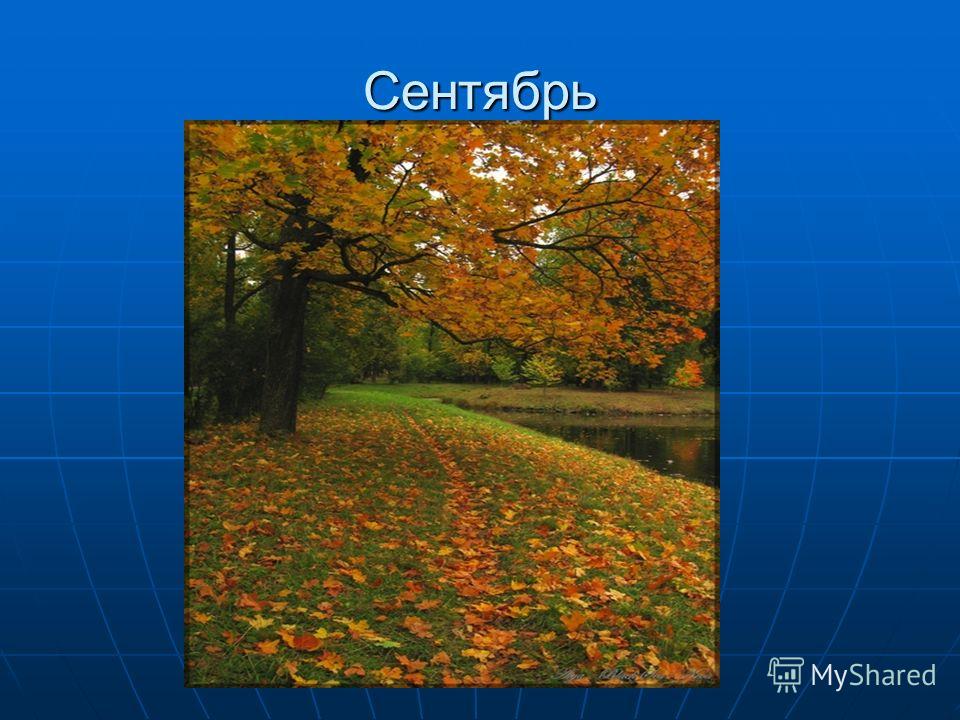
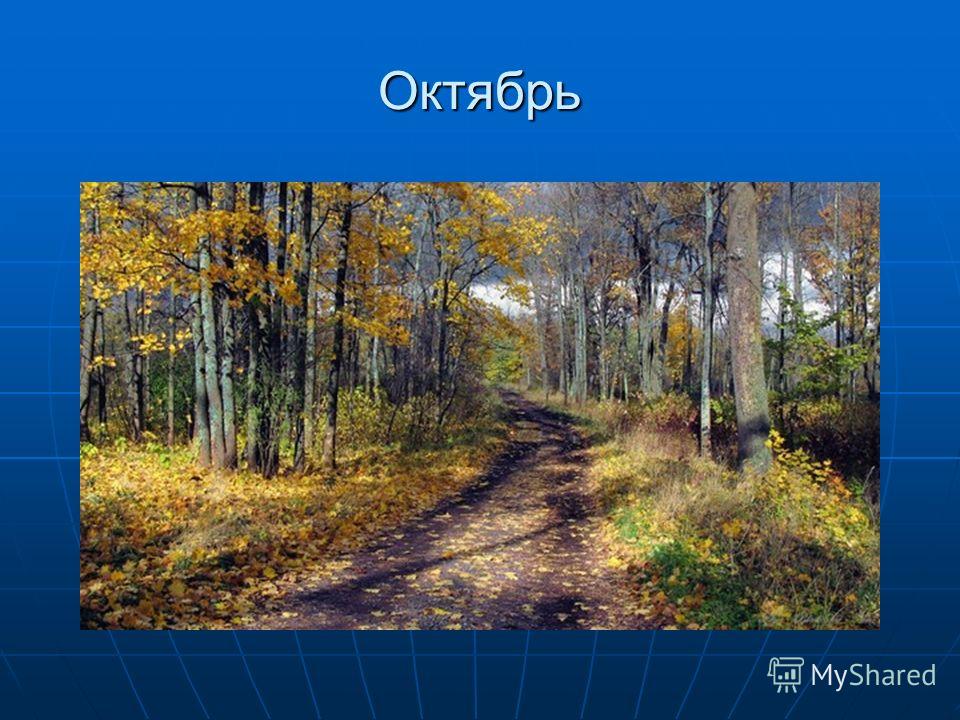


Migratory birds The stork is a large bird. Its total length reaches 120 cm, the length of the wing - 63.5 cm. The weight of an adult stork is about 4 kg. All plumage is white, except for primary, covering and long humeral feathers - they are black. The stork eats frogs and small fish, eats lizards, slugs, snakes, various insects. Instead of a song - a loud clicking beak (with the head tilted up). The stork is a large bird. Its total length reaches 120 cm, the length of the wing - 63.5 cm. The weight of an adult stork is about 4 kg. All plumage is white, except for primary, covering and long humeral feathers - they are black. The stork eats frogs and small fish, eats lizards, slugs, snakes, various insects. Instead of a song - a loud clicking beak (with the head tilted up).
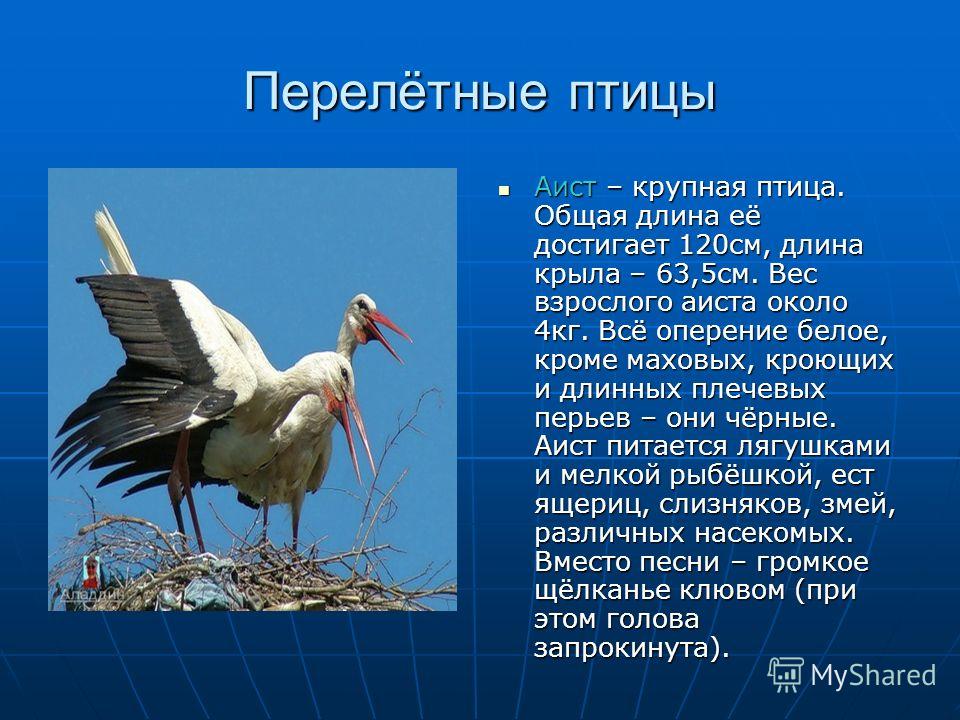
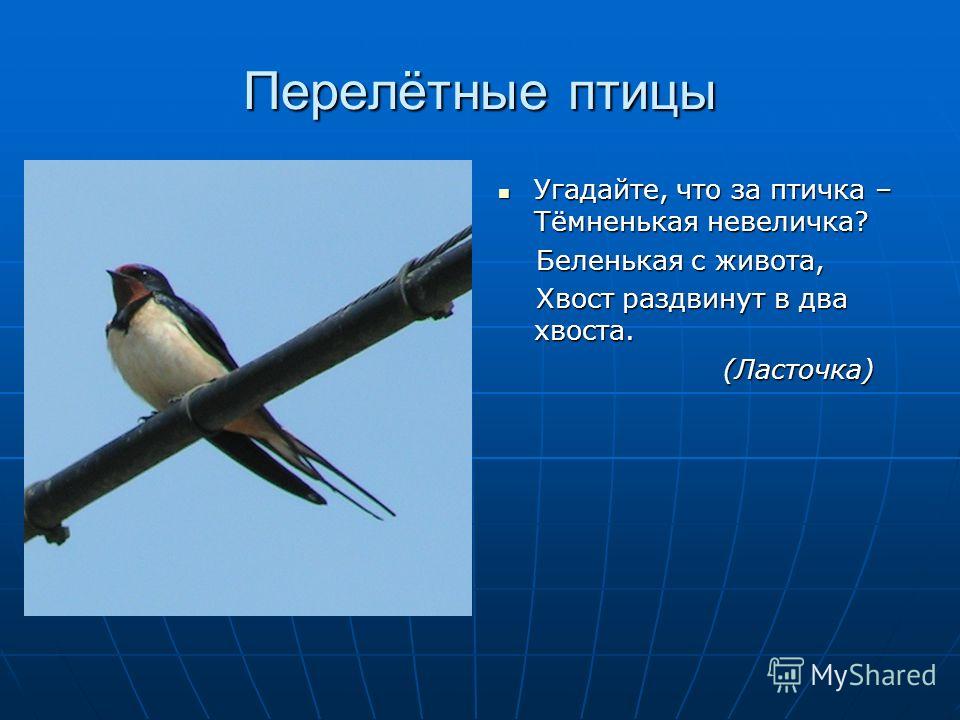
Migratory birds The beak of a swallow is very short and wide, narrow and very long wings, short legs not suitable for moving on the ground, the tail as if cut in half. Swallows are beautiful flyers, they spend most of their lives in the air. Swallows feed on the fly, catch small flies, mosquitoes, midges, small bugs. If you look at how a bird flies in the air - you can determine the weather. The beak of a swallow is very short and wide, narrow and very long wings, short legs are not suitable for moving on the ground, the tail seems to be cut in half. Swallows are beautiful flyers, they spend most of their lives in the air. Swallows feed on the fly, catch small flies, mosquitoes, midges, small bugs. If you look at how a bird flies in the air - you can determine the weather.

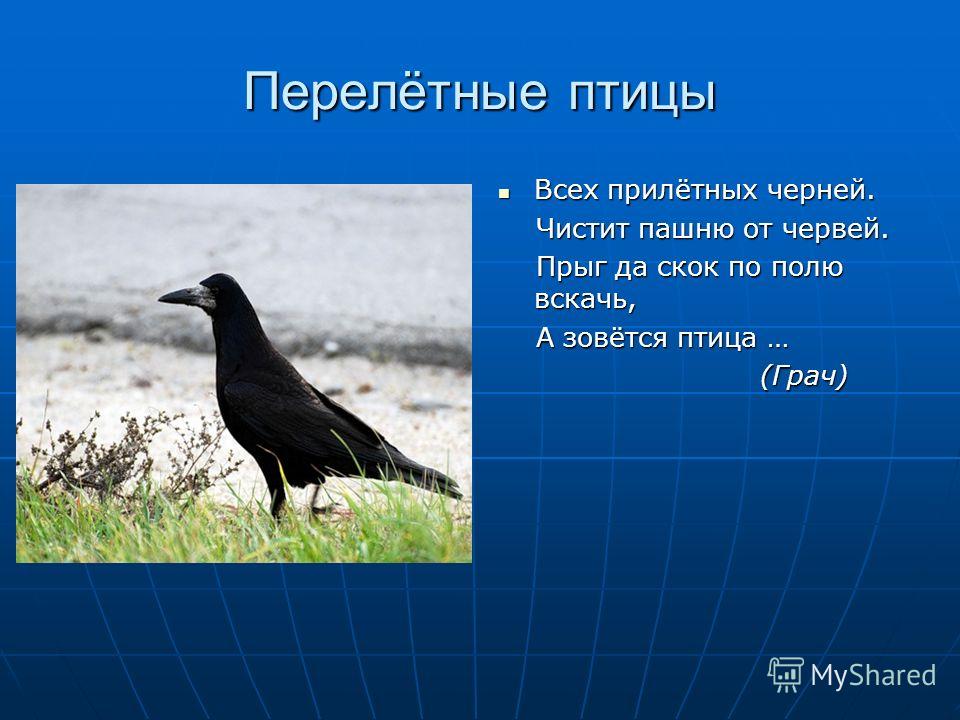
Migratory birds The body of a rook is 46cm long, black with a blue metallic luster. The beak is thinner than that of a crow, and in adult birds with a base and white skin around the beak. The wings are somewhat narrower than those of the crows; the plumage of the legs is slightly elongated and, as it were, disheveled. You can see a rook in the fields, shelter strips, as well as in large cities. The body of a rook is 46cm long, black with a blue metallic luster. The beak is thinner than that of a crow, and in adult birds with a base and white skin around the beak. The wings are somewhat narrower than those of the crows; the plumage of the legs is slightly elongated and, as it were, disheveled. You can see a rook in the fields, shelter strips, as well as in large cities.
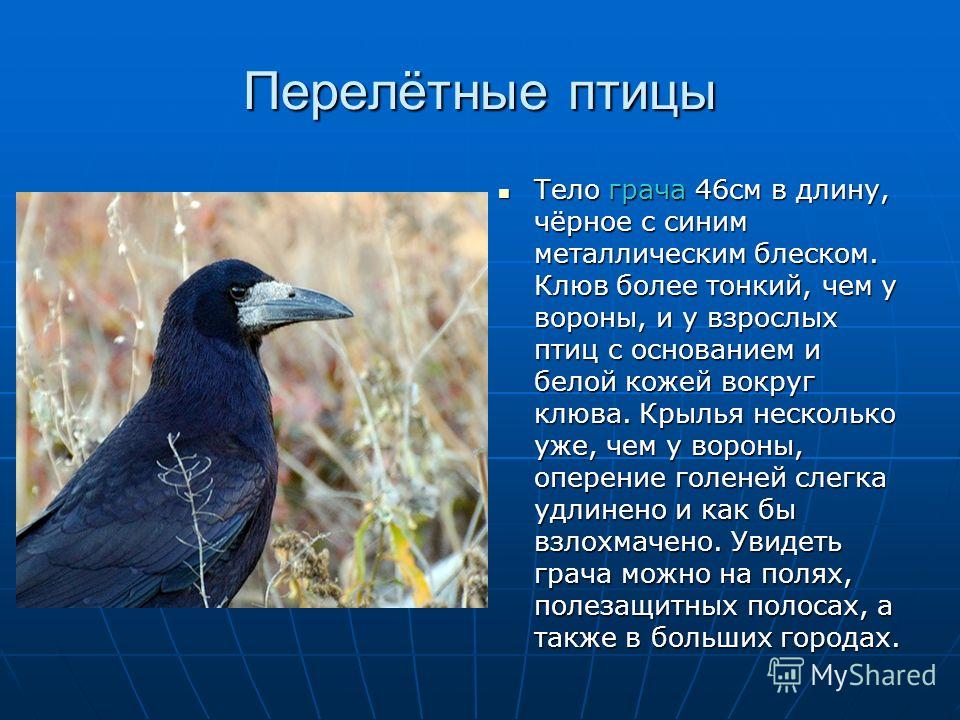
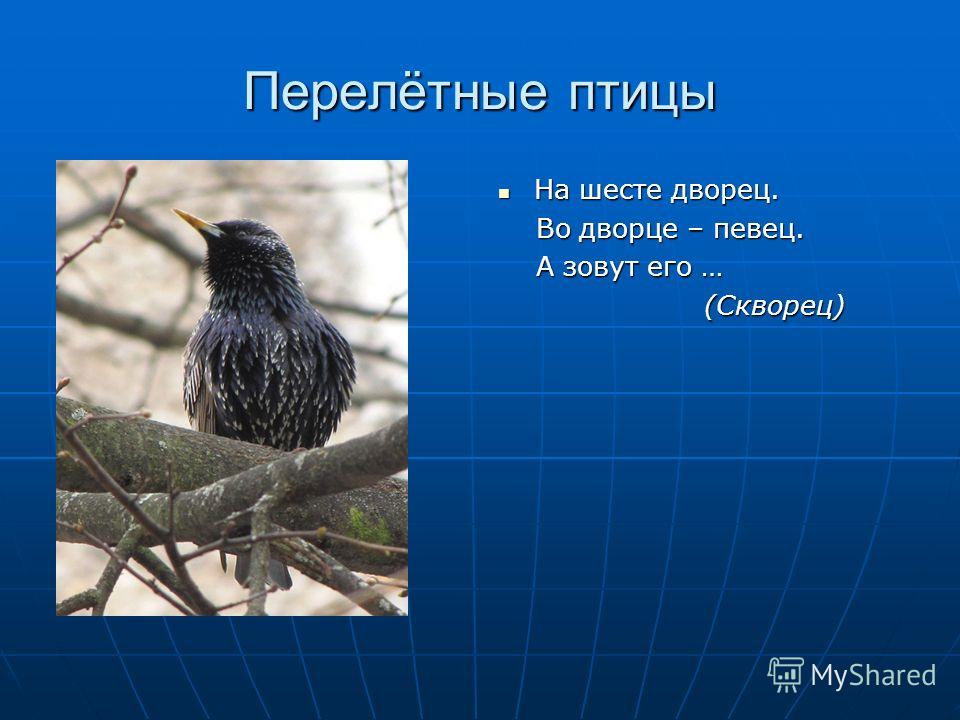
Migratory birds The Starling is a short-tailed, brilliantly-black bird, in autumn and winter in frequent white specks. Running bird. The song consists of whistles, squeaks, imitations of other birds and various noises. It feeds on various animal and plant foods. Starling is a very useful bird. It exterminates various garden caterpillars, Diptera insects and their larvae. The starling is a short-tailed, brilliantly-black bird, in autumn and winter in frequent white specks. Running bird. The song consists of whistles, squeaks, imitations of other birds and various noises. It feeds on various animal and plant foods. Starling is a very useful bird. It exterminates various garden caterpillars, Diptera insects and their larvae.
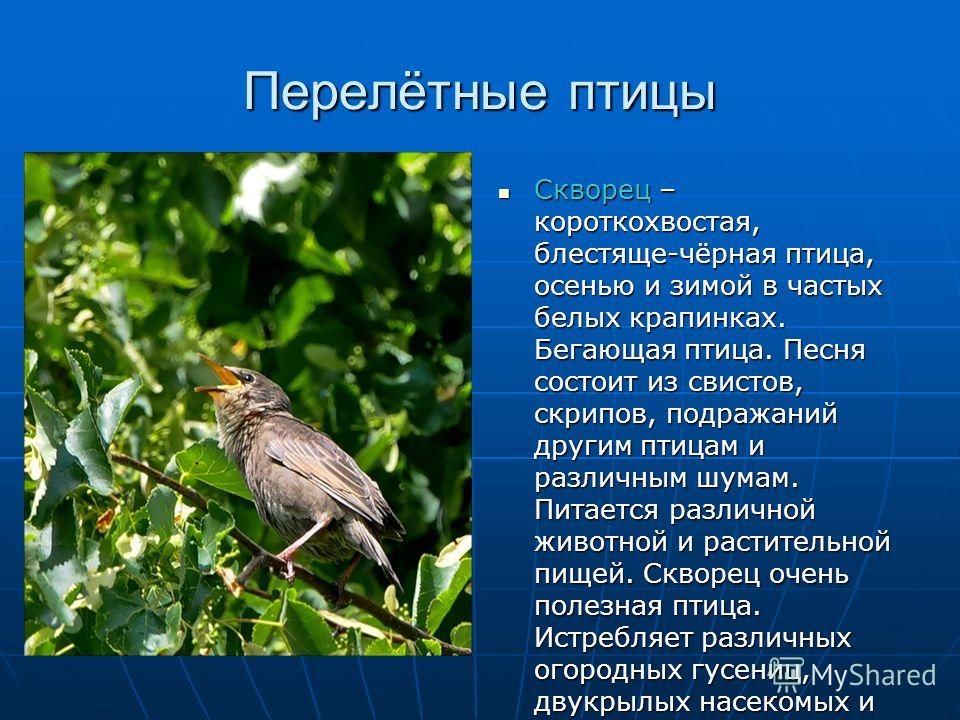
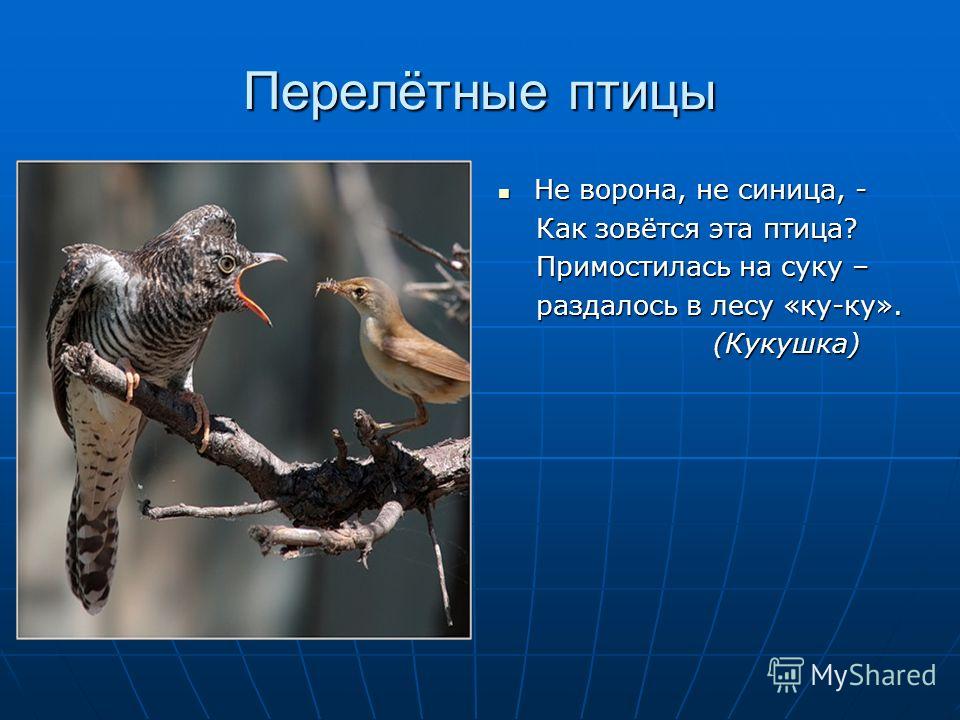
Migratory birds The total length of the cuckoo is about 9 cm, the weight is about 115 g. In addition to the well-known "ku-ku" males can laugh, wheeze. The main cry of the female is the fast clique “clique-clique-cli-cli-cli…”. The cuckoo throws eggs into the nests of more than 150 species of birds. During the season, it carries 8 to 10 eggs. The total length of the cuckoo is about 9 cm, the weight is about 115 g. The men are gray with a striped bottom, while for females - with gray or red. In addition to the well-known "ku-ku" males can laugh, wheeze. The main cry of the female is the fast clique “clique-clique-cli-cli-cli…”. The cuckoo throws eggs into the nests of more than 150 species of birds. During the season, it carries 8 to 10 eggs. The wintering birds of the Magpie are a non-migratory omnivorous bird. It feeds on both animal and plant food. Food is looking for insects, slugs, spiders and wood lice - forty is looking for on the ground. Unfortunately, magpies often settle in gardens and ruin the nests of songbirds. The forty is a non-migratory omnivorous bird. It feeds on both animal and plant food. Food is looking for insects, slugs, spiders and wood lice - forty is looking for on the ground. Unfortunately, magpies often settle in gardens and ruin the nests of songbirds.
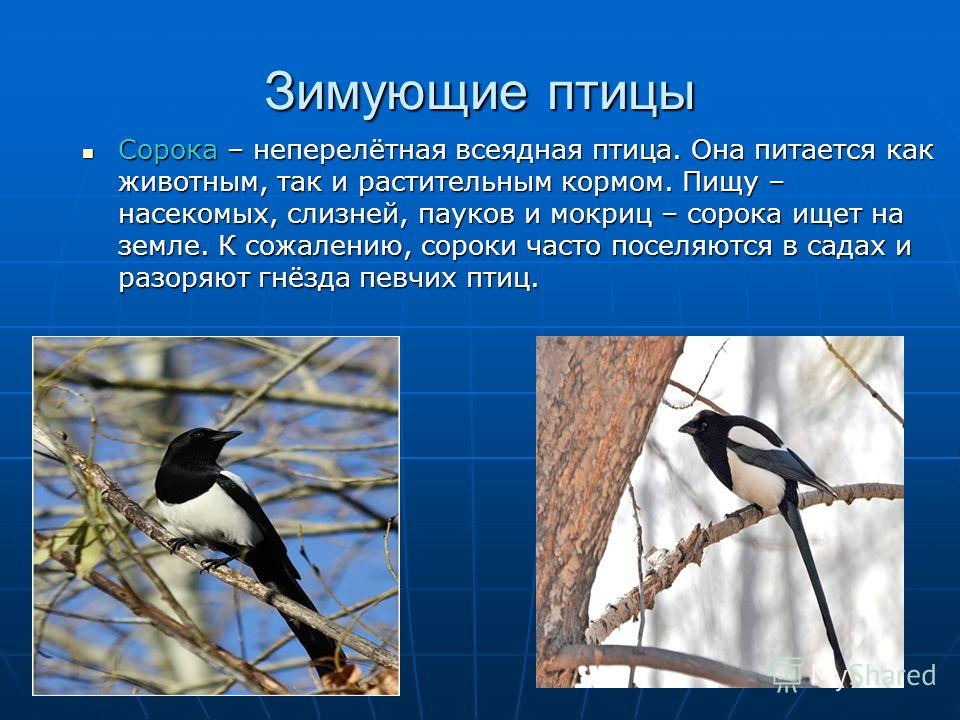
Wintering birds In summer, tits feed only on insects. In winter, insects hide, and the birds have a bad time, in winter they fly to our homes for help. They will peck at anything you give: grain, cereal, bread crumbs, pieces of meat, unsalted bacon. In summer, tits feed only on insects. In winter, insects hide, and the birds have a bad time, in winter they fly to our homes for help. They will peck at anything you give: grain, cereal, bread crumbs, pieces of meat, unsalted bacon.
![]()
Wintering birds The bullfinch is slightly larger than a sparrow, very densely folded, bluish-gray with a black cap, chin, wings and tail, white haema and strip on the wing, cheeks and chest in males red or red-pink. The bullfinch is slightly larger than a sparrow, very densely folded, bluish-gray with a black cap, chin, wings and tail, white tails and stripe on the wing, cheeks and chest in males red or red-pink.
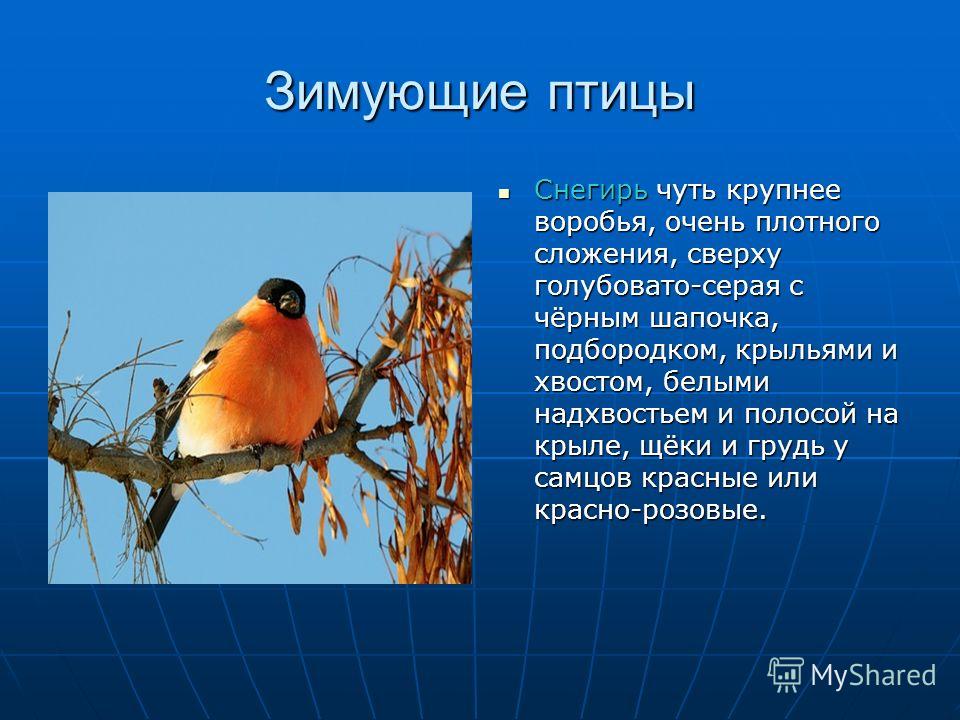
Wintering birds Crows are very smart. The crow's figure is rather clumsy. Eats the crow all. Carrion, mice, birds and their eggs, all kinds of worms and beetles, slugs, fish, vegetables, fruits, cheese, cottage cheese - everything suits her. In nature, the crow is certainly useful, but it becomes a thief near human habitation. Crows are very smart. The crow's figure is rather clumsy. Eats the crow all. Carrion, mice, birds and their eggs, all kinds of worms and beetles, slugs, fish, vegetables, fruits, cheese, cottage cheese - everything suits her. In nature, the crow is certainly useful, but it becomes a thief near human habitation.
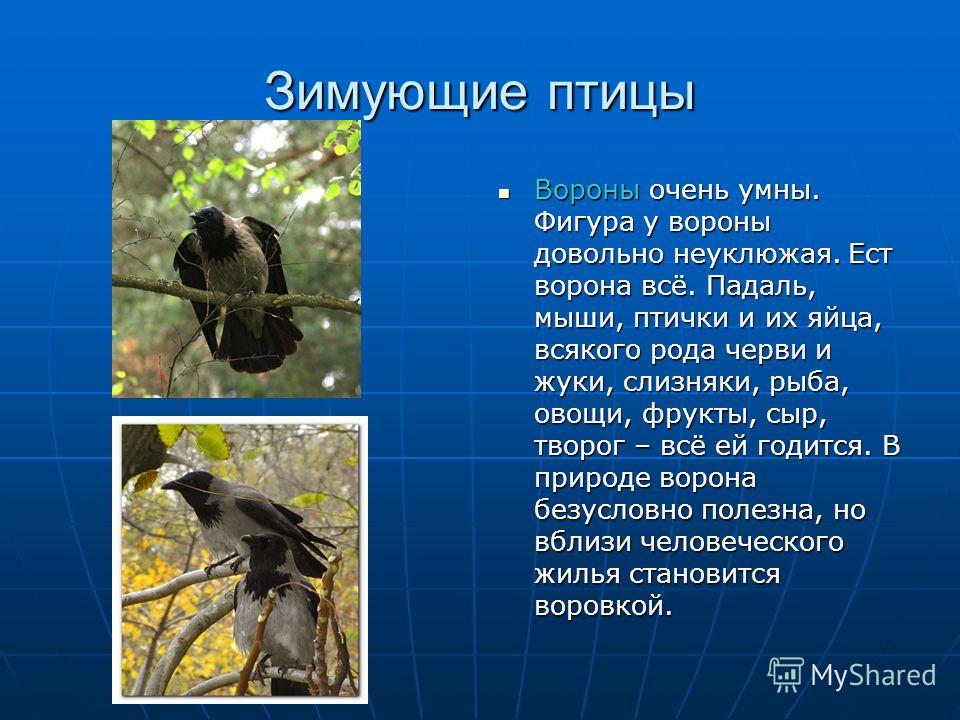
Wintering birds Large pigeon - length 29 - 36 cm, weight 265 - 380 g. The plumage is thick and dense. There are a total of 28 varieties of color. In wild pigeons, the body is light gray, with a whitish uppertail and two dark stripes on the outer side of the wings. It has excellent vision - distinguishes colors of the rainbow and ultraviolet rays. It feeds on vegetable food: seeds, berries, fruits of fruit trees. Large pigeon - length 29 - 36 cm, weight 265 - 380 g. The plumage is thick and dense. There are a total of 28 varieties of color. In wild pigeons, the body is light gray, with a whitish uppertail and two dark stripes on the outer side of the wings. It has excellent vision - distinguishes colors of the rainbow and ultraviolet rays. It feeds on vegetable food: seeds, berries, fruits of fruit trees.
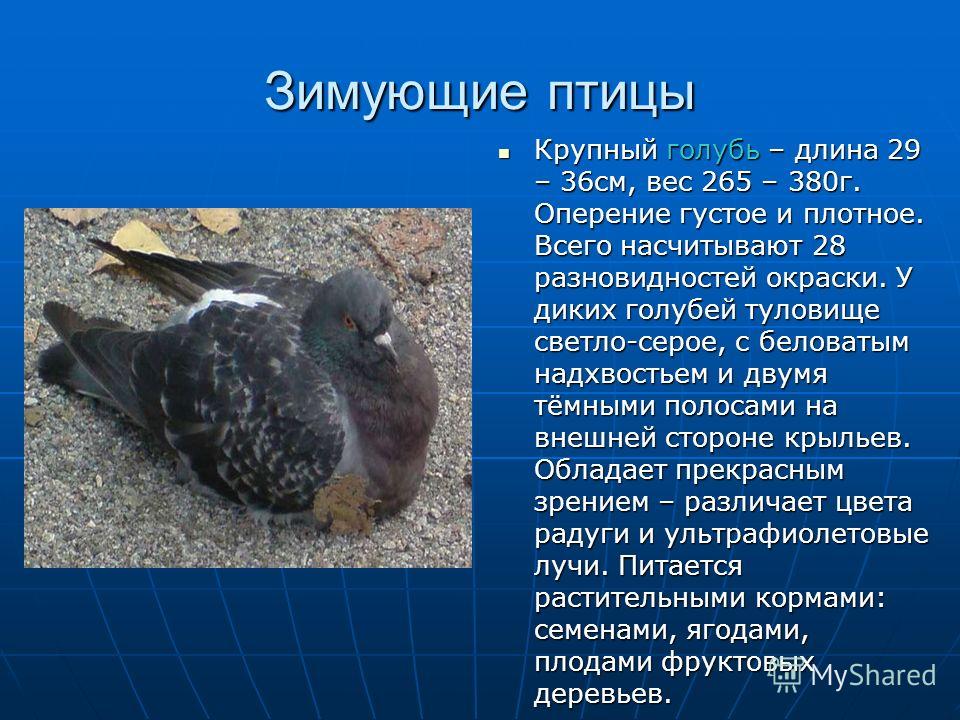
Wintering birds Sparrow - brisk, cheerful, resourceful and sociable bird. Pecks oats, millet, in the winter settles near the person’s dwelling, pecks everything they find - an omnivorous bird. Sparrow is a lively, cheerful, resourceful and sociable bird. Pecks oats, millet, in the winter settles near the person’s dwelling, pecks everything they find - an omnivorous bird.
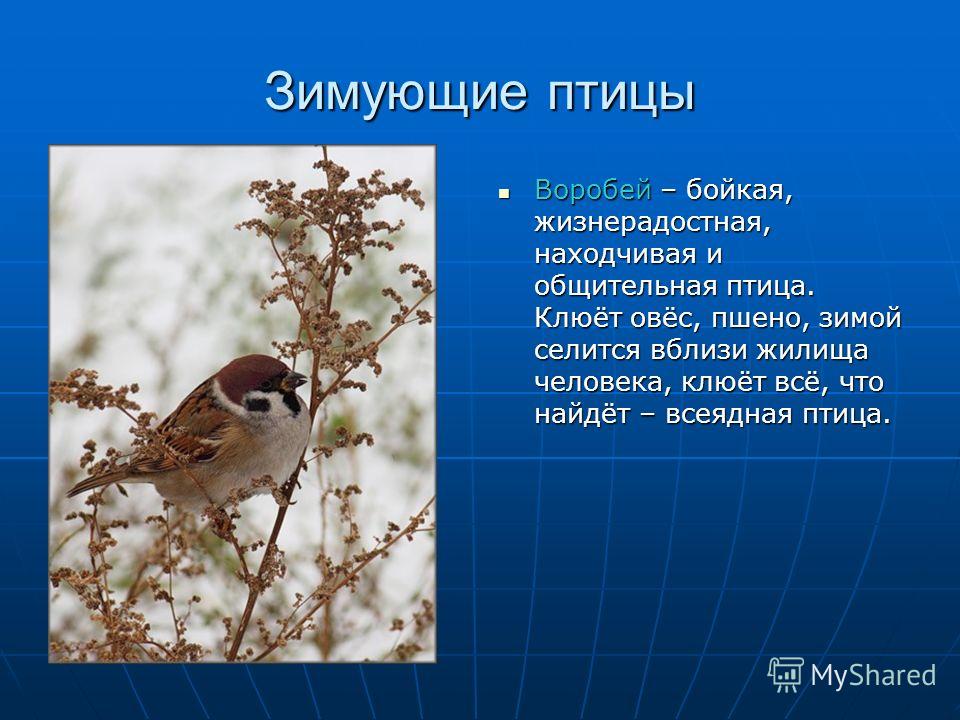
Wintering birds In the summer, colorful woodpeckers feed on tree insects, and in winter, feed on coniferous trees. In the spring, the woodpecker drinks birch sap. This is one of the very useful birds of our forests: it works all year round to eliminate pests. In the summer, spotted woodpeckers feed on tree insects, and in winter, on seeds of coniferous trees. In the spring, the woodpecker drinks birch sap. This is one of the very useful birds of our forests: it works all year round to eliminate pests.

The story about titmouse Titmouse is a wintering bird. Her body is covered with feathers; there is a head, neck, body, two wings, two legs, a tail. Her breast is yellow: yellow-breasted tit. In winter, it feeds on rowan berries, seeds of cones, and tree buds. Titmouse is a wintering bird. Her body is covered with feathers; there is a head, neck, body, two wings, two legs, a tail. Her breast is yellow: yellow-breasted tit. In winter, it feeds on rowan berries, seeds of cones, and tree buds.
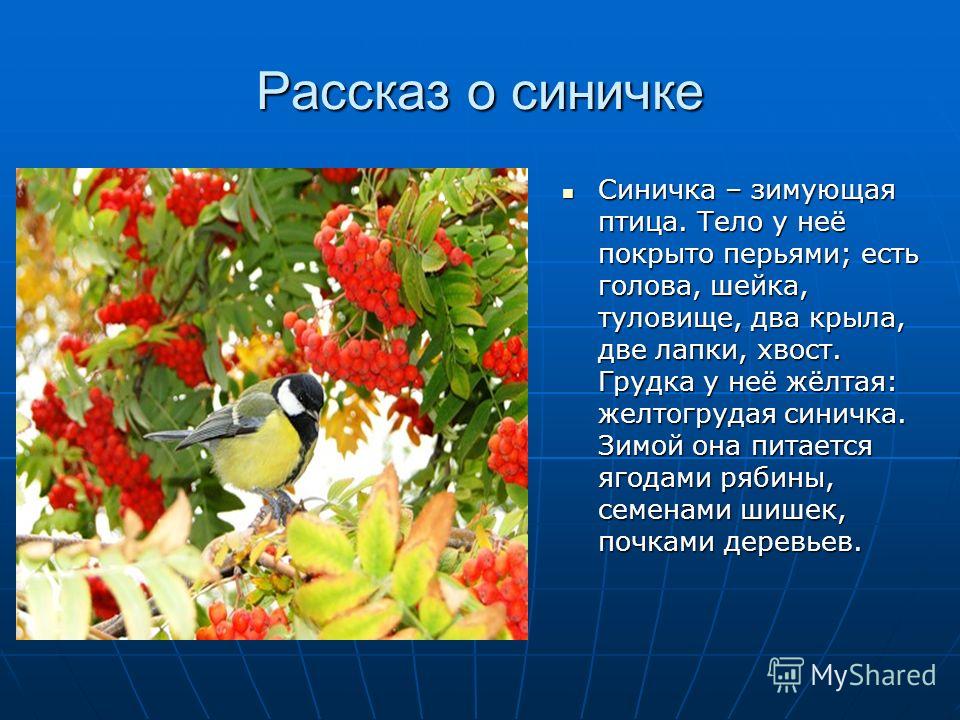
Take care of the birds! Alexander Yashin Alexander Yashin Feed the birds Feed the birds in winter. Let from all ends To you will fly, like home, Flocks on the porch. Not rich in their feed. A handful of grain is needed, A handful of one A handful of one And not terrible It will be their winter. How many perish them not count, See hard. But in our heart is And for the birds warm. Is it possible to forget: they could fly away, And they stayed to spend the winter At the same time with people. Teach the birds in the cold To your window, So that without the songs we did not have to meet Spring.
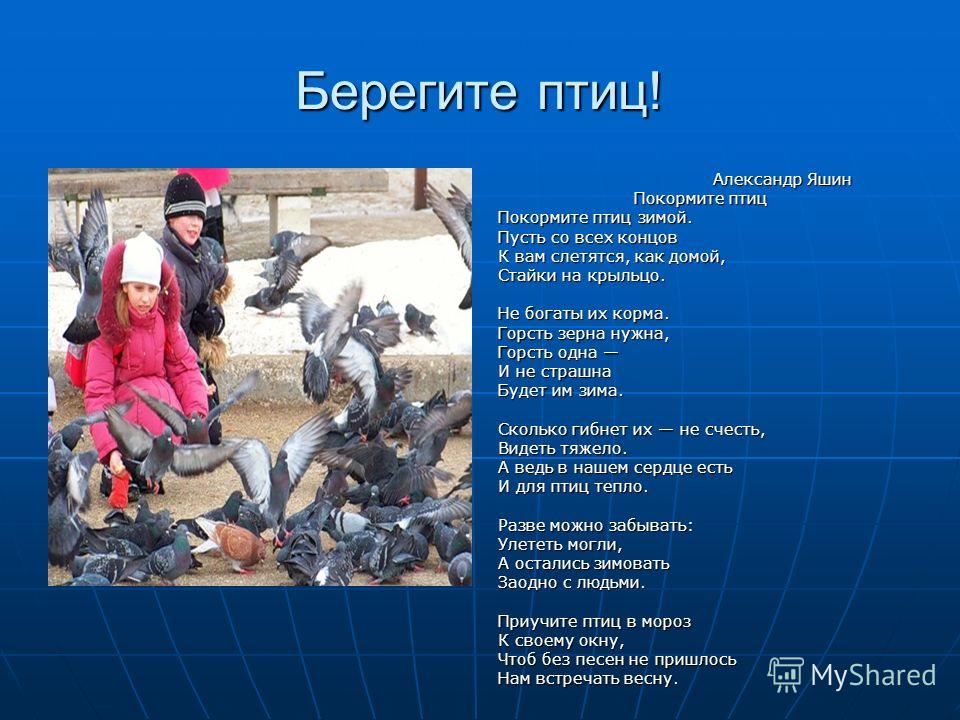
Support the birds in the winter! Wintering birds are not afraid of frost and manage to get food even in the coldest weather. They look for insects hiding in bark cracks, in the cracks of houses and fences, looking for fruits and seeds of deciduous plants, cones of coniferous trees with seeds. But during snowfalls, blizzards and severe frosts, birds starve and even die. They fly to our homes for help. And we must help you survive the winter feathered friends. Wintering birds are not afraid of frost and manage to get food even in the coldest weather. They look for insects hiding in bark cracks, in the cracks of houses and fences, looking for fruits and seeds of deciduous plants, cones of coniferous trees with seeds. But during snowfalls, blizzards and severe frosts, birds starve and even die. They fly to our homes for help. And we must help you survive the winter feathered friends.
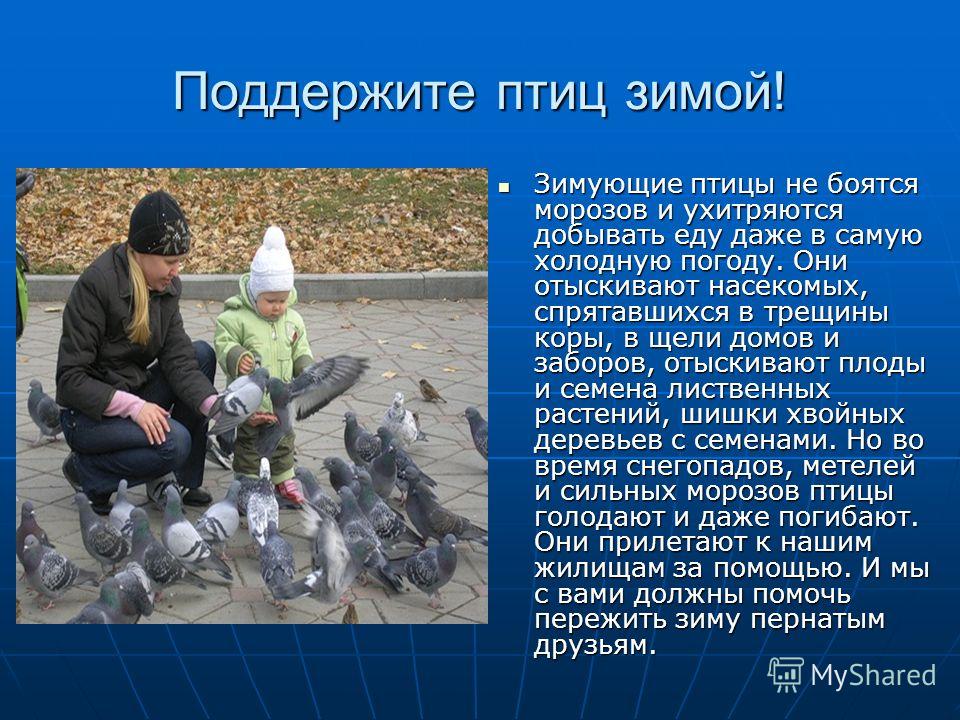
 magicov.ru Secrets of magic.
magicov.ru Secrets of magic.

